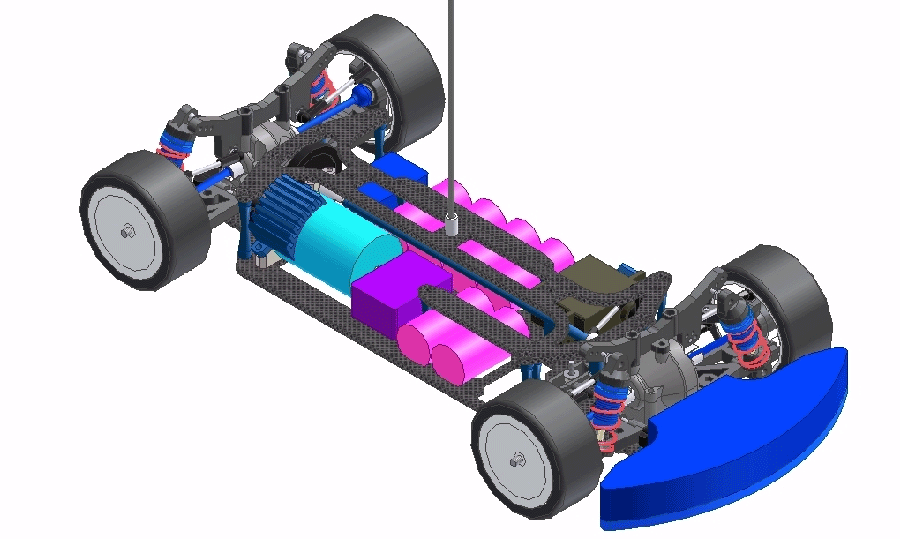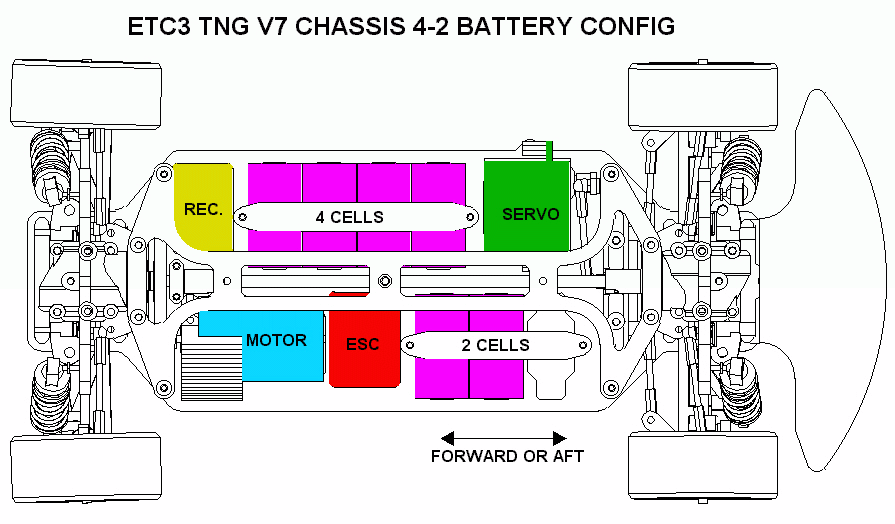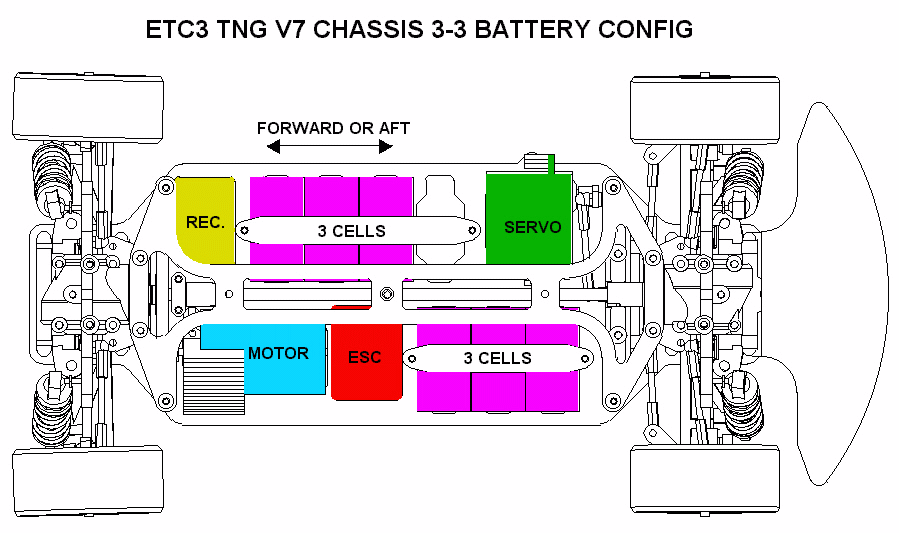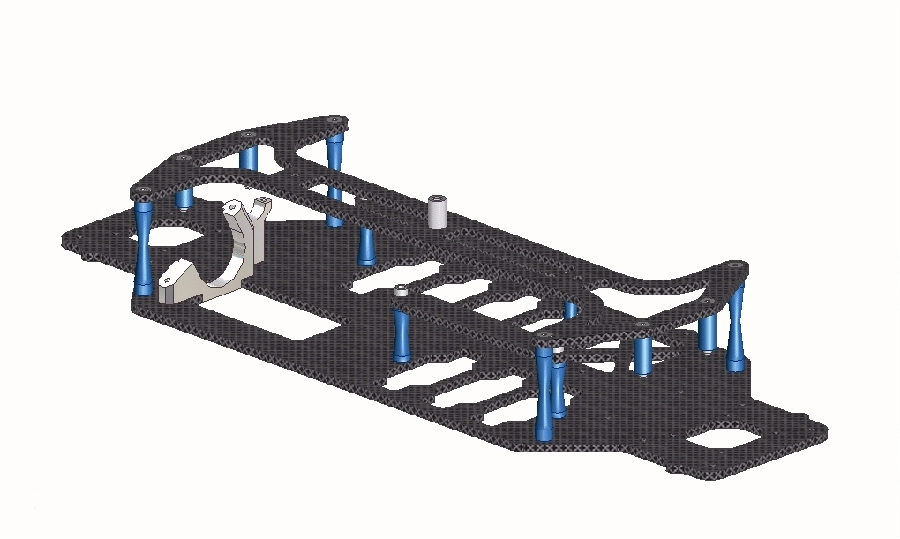When you breakdown the chassis into components (motor, batteries, ESC, servo and receiver) it quickly becomes apparent why there is such a significant weight imbalance. The table below compares the standard TC3 layout to the component placements used in the TC3 TNG V7 Carbon Fibre Chassis.
| Chassis Layout | Weight Distribution (gm) | ||
| Right Side | Left Side | Difference | |
| Std TC3 Layout | 301.3 | 384.8 | 83.5 |
| 4/2 Battery Config | 353.9 | 329.8 | 24.1 |
| 3/3 Battery Config | 385.9 | 297.8 | 88.1 |
Immediately apparent is the 83 gm difference in weight between the left side and right side component weights in the standard TC3 layout. That's a significant difference and explains why the longitudinal centre of gravity is off by so much.
After rearranging the components the optimum 4/2 battery configuration was arrived at with the steering servo and the receiver are relocated to the left side of the chassis. The 3/3 battery configuration was simply something that could be accommodated within the new chassis layout and was not really the focus of the design. As you can see the 3/3 battery configuration shifts the weight imbalance from the left side (LS) to the right side (RS). This configuration may provide some benefit on tracks where most of the turns are right handers.
The calculated front-rear and left-right chassis balance is shown below. As you can see the static weight balance is nearly perfect in the 4/2 configuration.
| Battery Placement | Weight Balance | |||
| Left | Right | Front | Rear | |
| 4/2 aft | 50.0% | 50.0% | 49.2% | 50.8% |
| 4/2 forward | 50.0% | 50.0% | 50.2% | 49.8% |
| 3 aft/3 | 48.6% | 51.4% | 50.1% | 49.9% |
| 3 forward/3 | 48.6% | 51.4% | 51.4% | 48.6% |



